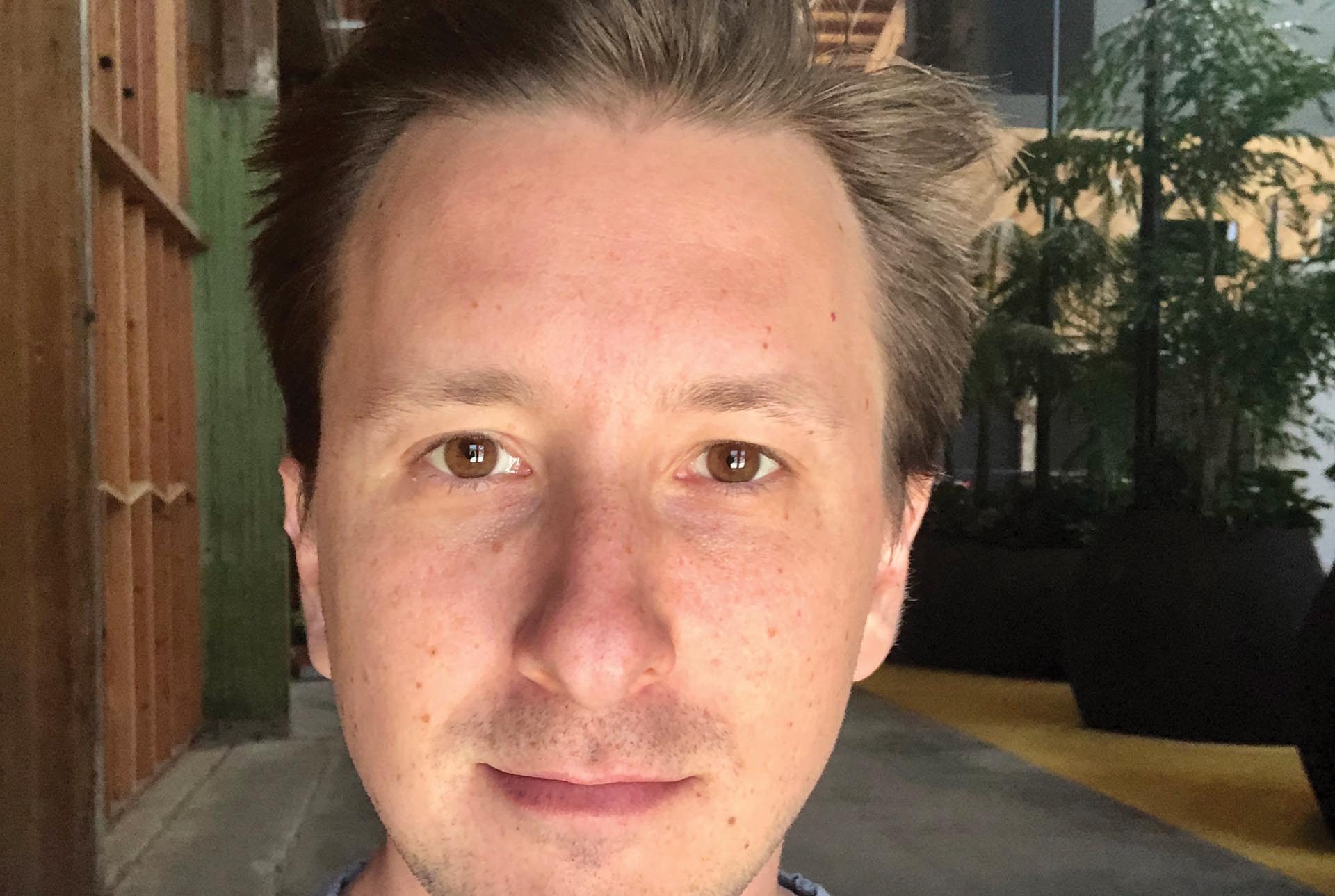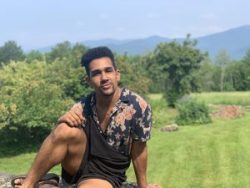Telling the Truth

It took author Jennifer Finney Boylan ’80 a long time to find the key to her artistic success—something she held all along, and just didn’t know it.
Not so long ago, Jenny Boylan ’80 wasn’t very good at telling the truth.
It’s an odd, potentially problematic trait for a professor, a partner, and a parent. And Boylan is all three and then some. But Boylan is also an artist. A writer, to be specific. And as a writer, not telling the truth can be a great asset. The use of dramatic irony and misdirection; withholding information for the sake of a plot; trading in metaphor—all standard practices of the craft. “Show, don’t tell!” reads the old maxim.
So, you see Boylan’s problem.
“To create any art is an act of love and faith,” she says of her artistic process. “You have to believe in something bigger than yourself. It’s the process of being alive and turning our flesh and our bodies into soul, and it’s a tremendously mysterious kind of alchemy—taking something that’s deep inside, for which you almost have no words, and putting it out into the world as music, light, paint, story. Why would we do such a thing?”
For Boylan, initially at least, it had something to do with the search for and ties between truth and identity. Find one and you might find the other. If she couldn’t pin them down for herself exactly, maybe her ability to grapple with them anyway would help her readers wrangle and render their own. And it worked well enough that she built a solid academic and fiction writing career.
Except a voice inside kept reminding Boylan that wasn’t enough. She had work to do before she could perform the kind of alchemy of which she knew she was capable. And the truth, it’d turn out, was only being made stranger by fiction.
Wesleyan in the Late ’70s
Born in Valley Forge, Pennsylvania, James Boylan attended an all-boys prep school in Haverford and was initially headed to Oberlin College in Ohio. That is, until the letter from Wesleyan arrived in July of 1976. Boylan was off the waitlist, and enrolled immediately.
“Until I married my wife, it was the greatest thing that had ever happened to me,” Boylan says of Wesleyan in the late ’70s. “There was just something about it at the time. There were lots of very creative souls who were encouraged by Wesleyan to make art. And, in so doing, to become themselves.”
In addition to learning how to be “insufferably cool,” Boylan edited The Wesleyan Argus, served on the board of directors of the WESU radio station, and studied in the College of Letters with Professors Harris Friedberg, Sherman Hawkins, and Franklin D. Reeve (a renowned writer and father of Superman actor Christopher Reeve), whom Boylan cites as a hero and a significant writing influence. Boylan recalls the distinctive way in which the arts were threaded into student life: On a typical Thursday in February, students could go to a dance concert, hear African drumming, see a Javanese gamelan performance, head over to watch monster movies in the cinema at midnight, and then, “after you got all your homework done, which of course we all did,” spend the rest of the night and into the morning hours hearing live music and dancing with friends.
Immersed in a sea of self-expression, Boylan was also struggling with it. In some ways, that felt appropriate in a college environment where “you’re trying on different identities at all times.” Not having sufficient insight or terminology to describe the experience made it challenging in others. Sophomore year, Boylan took a colloquium called “Sincerity and Authenticity” taught by Professor Richard Vann and Daniel Stern (an accomplished advertising executive, novelist, and close friend of author Bernard Malamud). The class was well-timed and provided a way of framing questions that Boylan has continued to ask to this day, such as: What does it mean to live honestly in the world?
“People talk about living as their true selves,” Boylan says. “But what is that? An idea you have in your heart? An external standard you struggle to live up to? We tell children to just be themselves and always tell the truth, which seems like great advice. Except that a lot of times, being yourself is the hardest thing in the world. Telling the truth isn’t always good. When you tell the truth, there can be consequences that are hard to live with.”
Boylan wasn’t yet prepared for or even fully aware of those consequences. But Wesleyan’s creative environment was providing tools to help express that struggle, however insufficiently. Rather than shying away from the challenge, Boylan doubled down, choosing to move to New York after graduation to pursue the dream of being a writer. Despite parental disappointment amid dashed visions of law school, Boylan was resolute.
“I suppose the belief in the impossible is a sign of human resilience,” Boylan writes in her new book, “rather than idiocy.”
The Impossible Becomes Reality
In 1988, Boylan joined the faculty at Colby College in Maine, married wife Deirdre, and started a family, securing many of the trappings of a successful adult life: a blossoming career, a life partner, a family. But there was still a “gentle voice that had whispered to me as a child” reminding Boylan on occasion: “You are not you.”
Boylan finally confronted the voice and the associated truth in 2000, when she announced and began her male to female transition. Born James, she would now become Jennifer. The consequences were stark, chief among them the distinct possibility that her transition would end her marriage and dissever her family. Telling the truth—being herself—meant potentially losing everything dear to her, including the love(s) of her life.
That’s not how the story played out. Instead, Boylan was named Professor of the Year at Colby. Deirdre did not leave. Her family grew stronger. And Boylan chronicled the highs and lows of her transition in her 2003 autobiography, She’s Not There: A Life in Two Genders, which went on to become not only a best-seller, but a landmark text for the transgender community and a staple in gender studies curricula.
Novelist Richard Russo, Boylan’s close friend and colleague at Colby, once commented to her that her fiction sometimes suffered from the fact that “you think it is realism.” The trouble for Boylan was that the tragic and the absurd—just like
truth and identity—were inextricably linked. This new mode of nonfiction, however, empowered her to join the two. To be at once hilarious and sincere. In essence, to be herself. And in that form, she found the most elusive thing for a writer—she found her voice.
Strong Transitions
With her new voice, Boylan flourished in a mode of self-expression that allowed her (and everyone else) more direct access to those difficult, private, amorphous areas that the best writing is always about.
It also catapulted her into the zeitgeist—at that time in the early 2000s, the simple fact of being trans was a breaking news story—and, combined with her subsequent work and significant efforts, has given her a powerful platform from which to support gender rights. She has been interviewed on television’s biggest news programs. In 2013, she was selected as the first openly transgender co-chair of GLAAD’s (formerly the Gay & Lesbian Alliance Against Defamation) board of directors. She has regularly appeared on screen and consulted on Caitlyn Jenner’s reality show, I Am Cait. She is the inaugural Anna Quindlen Writer-in-Residence at Barnard College. She has a biweekly column in The New York Times.
So, yes, many things have changed. But for Boylan, especially when it comes to her work, it’s not necessarily the things you’d expect.
“It’s not that when I was a man I was writing about submarine warfare and opening cans of beer with my teeth, and now that I’m a woman it’s all about eating salad,” she says. “The big difference in my work is I went from fiction to nonfiction. That had something to do with my initial feeling that if I was going to be living in the world more honestly, the work I was creating had to be more honest, too.”
Nonfiction has allowed Boylan to talk about her transition in a way that is both unique and polarizing. At one point in her writing, she discusses the pressure she felt as a boy to “respond to some of the most important things in [the] world . . . with silence” and refers to herself as “a woman who had a boyhood.” She is quick to point out that that is not a truth many transgender women would fully embrace and might even classify as offensive, given that their experience is to have always identified as women. Still, the fact that Boylan walked around as a male-bodied person until the age of 40 gave her unique insight into being male, including the kind of socialization and privilege men experience. If art is about self-expression and honesty, hers came most to life when she wrote from this unique perspective.
“I think we should be in the business of accepting everyone’s experience as cool and real,” Boylan says. “It’s not that I wanted those privileges, but I got them. And it doesn’t make me less of a woman. It means my experience is different than many other women. It’s also worth noting that the change in my artistic expression was less about going from male to female, and more about going from a younger to an older person, from someone who had a secret to someone who doesn’t.”
When she reads her earlier work under a male byline, Boylan notices that the voice feels similar but that the author is always positioning themselves one step ahead of the reader, which she says is “very entertaining, but not entirely honest.” This is a problem that plagues many contemporary writers, who struggle in the space between overwrought earnestness and the soullessness of postmodern, ironic modes of expression. Part of Boylan’s genius in establishing her voice was finding a way through to a space that allowed her keen sense of observation and her talent for writing about deep, vital concepts like love and loss to flourish.
“Does every experience with art have to be the artist baring their soul?” Boylan asks, reflecting on that artistic transition. “I don’t know. Maybe all art is an illusion. It’s a dream, and part of what draws us to it is that we get to escape and inhabit a world that’s not our own. On the other hand, it has to in some ways give us something that we can bring back to the world we live in. Otherwise, it’s just a cheap vacation. And there’s nothing wrong with that either. But, it’s the difference between eating a really good meal and downing a package of M&Ms.”
Bringing Story into Focus
Today, Boylan splits her time between New York City and Maine with her wife, Deedie, and has two children—a son, Sean, and a daughter, Zai. For the last 15 years or so, she has been serving up work in both the fiction and nonfiction genres. She’s continued to write about trans bodies and personhood, but she’s also written about those other defining parts of her full life—a literary thriller, growing up in a haunted house, a series of young adult novels and, maybe scariest of all, parenting.
The variety of her work reflects the variety of her interests, as well as shifts in cultural consciousness that she helped to jumpstart. In the years since She’s Not There came out, for example, the United States has reached marriage equality in all 50 states and LGBTQ+ representation in media has become almost mainstream. Along with that significant progress, interestingly, it also means that the
territory Boylan initially mined for her work would no longer stand alone as story.
“There was a time when to simply tell a story about a transgender person was considered really quite unusual and revolutionary,” Boylan says. “Now there have been so many books that a transition story—we’re always going to need them. But to some degree it’s very well-mined territory. Over time, I hope the fact of someone being trans will be seen as less exciting and the focus will be more on the story, itself.”
Read more about Boylan in a Q&A about her work, and in an excerpt about her new book, Good Boy: My Life in Seven Dogs.



